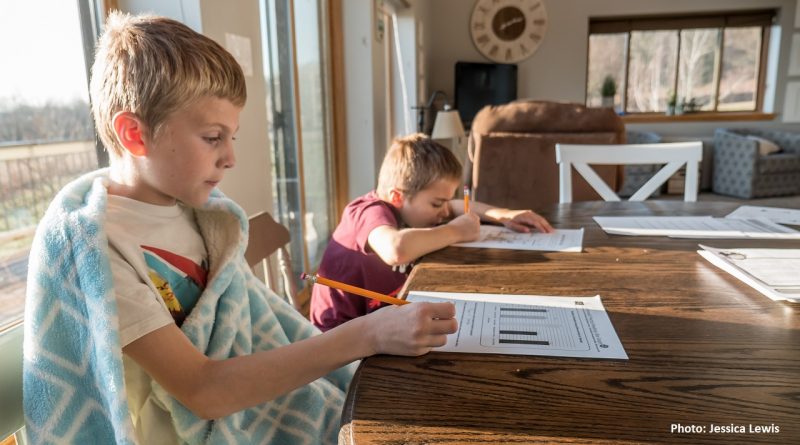Covid-19 Homeschooling Experience: Survive with 3 Montessori Principles
My eight-year-old narrows his eyes in frustration and lets out yet another sigh. He has been sighing since 18 March, the day his primary school closed for children whose parents aren’t key workers. He is exhausted, as am I and we are at an impasse, trying to do a math lesson but the way I was taught doesn’t gel with how he was taught. We might as well be speaking different languages.
Over the last few months, I have watched him go from being in love with school to dreading it. When he actually burst into tears during a home school session, I knew we were in trouble. The emotional outburst was just the tip of the iceberg. Lurking beneath the waters were near daily stand-offs, tantrums and fights over Bus Stop Division and Column Addition and Subtraction. His reaction when I tried to persuade him to “borrow and carry the one” was downright theatrical. He was stressed and tired; I was stressed and tired.
Since Quarantine Day 2 the topics of discussion in many of my mommy group chats has fluctuated between exasperation at the reality of juggling homeschool with work and a running pro/con list of the merits of returning the kids to Victorian-style workhouses. (Kidding. Mostly.) I should have been buoyed by the reality that I wasn’t alone. Instead, I was hyper-aware of my feeble homeschool attempts and I felt anxious and like I was drowning beneath the expectations and the weight of it all. I wanted to find a way to survive the experience in a peaceful and happy way.
There are dozens of teaching methods for educating children but the one that caught my attention promises to leave children calm, peaceful and poised to absorb knowledge. It is called the Montessori Method and it sounds like an educational utopia.
The Montessori Method was developed in 1906 by an educator and physician from Italy named Maria Montessori. Montessori’s methods have gone on to shape children around the world. Alumni of Montessori schools even include celebrities such as singer Beyonce Knowles, Amazon’s Jeff Bezos and the late cook Julia Child.
Curious if there were elements of the Montessori Method parents of children of various ages could use to soothe their quarantine woes, I spoke with four educators in Washington, USA from Montessori Children’s House, an award-winning AMS accredited Montessori school committed to striking the balance between nurture and nature in education and child development. While there are Montessori schools in the UK, we tend to limit Montessori-influenced education to nursery-age students.
Be ready to forgive yourself
Homeschooling during the Covid-19 crisis is overwhelming for both parent and child. Many parents confess to having anxiety about doing it “incorrectly”. Naturally, if this anxiety gets passed on to our children it could create trepidation in kids who are usually excited about learning. To survive this new challenge, parents need to remember to be gentle with themselves.
Marc Cobb, the juniors school programme director at Montessori Children’s House said, “I think a lot of the parent’s anxiety comes from being uncertain and feeling like you’re unprepared. But we teachers were unprepared for the pandemic, too. We didn’t know this was going to happen. It’s okay to struggle a little and it’s okay to feel uncertain. Parents should allow for some self-forgiveness.” Forgive yourself for not being prepared to suddenly take on the responsibility of home education. Forgive yourself when it gets tough and you feel emotional. Forgive yourself when you feel like you’re drowning in commitment. Your child doesn’t need perfection; they need your best.
Establish a working relationship with your child
Before the stay-at-home order, your child moved between two different worlds: home and school. Your child juggled two sets of expectations – at home and at school. Suddenly those worlds have collided and it is natural for your child to feel confused and overwhelmed by this. Before you can effectively homeschool your child you need to establish a working relationship.
A key principle of the Montessori Method encourages relationships and connections between the parent and child and being open and honest. “Doctor Montessori always said ‘Follow the child,’” Nicole, the primary programme director explains. “That means having a deep relationship and connection with the child so they understand you and you understand them.”
When you strive to understand your child, you can get a sense of how they’re feeling.
“Children are having to adjust to a lot of change at the moment and mental health experts tell us that structure and routine are key for coping with quarantine,” Nicole says. “But that doesn’t mean rigidity. Parents need to find a balance between structure and freedom. An approach you could adopt is to have landmark events throughout the day with a lot of freedom between the landmarks. This gives the child enough structure to feel safe and secure and also enough freedom so they can be creative.”
Know when to give and take
Half the homeschooling battle lies in the power struggle between parent and child and knowing when to give and take. Trying to emulate a typical 9 to 3 school routine for your child is likely to be overwhelming for everyone but reframing the goal of quarantine educating can go a long way to putting everyone at ease.
Melissa Brooks, the extracurricular programme director at Montessori Children’s House said, “I’m a parent and I’m also homeschooling and I have to keep reminding myself as a parent that my child is not going to get behind. My biggest goal for my child is to just make sure that he’s okay. If the more I push the academics right now the more stressed our household gets, the less learning can happen in that moment. Children’s brains flood with stress and when that happens, they’re not taking in any learning at that point. Sometimes just stopping what you’re doing and going outside is much more productive than beating your head against the window.”
A smooth home education experience requires an environment that is conducive to learning. Marc explains that parents can achieve this by setting up a dedicated space and having an area where you child can effectively “go to school”. “Routine and an environment that’s prepared goes a long way,” Marc adds.
Once your physical environment is prepared, the next step is to set expectations with your child. It’s natural that you and your child will have different solutions for solving the same problem. Address that difference from the outset, Nicole explains. “Just be really honest with kids upfront and say something like ‘We’re going to be doing this thing together right now and I’m probably going to do it differently. I need you to guide me.’”
Being humble like this is empowering for your child. “I’m always saying, ‘Tell me more; tell me more; I want to know more about what you’re thinking,’” Nicole says. “This kind of code-switching from parent-as-expert to parent-as-investigator is powerful.”
Another technique to empower children is to invite them to give you a lesson, Melissa says. If your child is doing review work, you can ask them to show you how it’s done. “If they get to give their mum or dad a lesson, it gives them pride and confidence and gets them engaged and wanting to do the work.”
Bear in mind that even with putting these techniques into practice, your child may still lack motivation some days. Knowing when to give and take also includes knowing when to push the academic curriculum and when to introduce other styles of learning.
“Engage your child in as much of home life as possible,” Melissa says. “In Montessori it’s called Practical Life Skills – get your child helping take the dishes out of the dishwasher, folding their clothes or helping with dinner. This is still learning and it helps to create and establish the family bond and it makes your child feel like they’re a purposeful part of the family. This is a unique time for children to be able to develop these skills.”
Kim Berude, the Montessori Children’s House infant and toddler programme director adds that Practical Life Skills can be taught to younger kids, too. “Enabling and allowing a child to be independent at the toddler ages helps them to develop their self-esteem.”
Knowing when to give and take also includes knowing when to ask for and accept support. If you or your child are having a particularly tough time with schooling at home, reach out to your child’s teacher, Melissa says.
“Be honest. Thank your child’s teacher for all they’ve been doing and then be transparent and let them know you or your child are struggling. They should be happy to modify some of the tasks and to support you and your family.”
Even if how we get from one day to the next varies from family to family, ultimately, we are all in this together, dealing with the same struggles. The entire quarantine experience was a teaching moment for my children and for me. I hope they’ve learned a few things, but I definitely learned that I need to follow their lead, practice self-forgiveness and ask for support when I need it. The end goal is to make it through the Covid-19 crisis with happy, resilient families.







